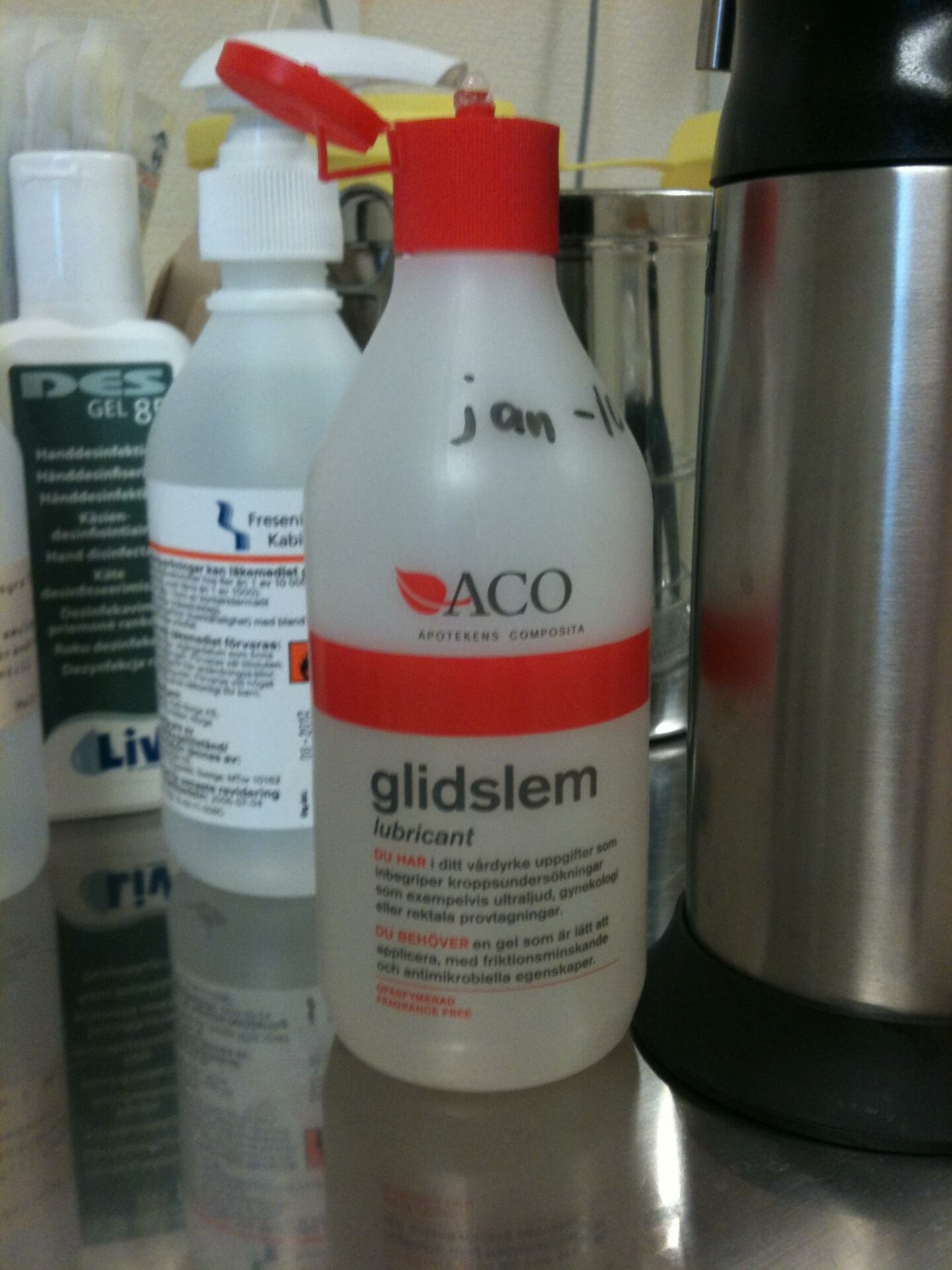Using a rectal thermometer to measure the body temperature of an infant is a common practice, and it is important to use the right type of lubricant to ensure accurate readings and minimize discomfort for the infant. There are several types of lubricants that can be used with a baby rectal thermometer, including petroleum jelly, KY jelly, mineral oil, and medical-grade lubricants. This article will discuss the various types of lubricants that can safely be used with baby rectal thermometers.You can use petroleum jelly (Vaseline) as a lubricant for a baby rectal thermometer.
Types of Lubricants Suitable For Baby Rectal Thermometer
When taking a baby’s temperature, lubricants can be an important part of the process. Rectal thermometers need to be lubricated in order to make the process easier and more comfortable for both the baby and parent. But not all lubricants are suitable for use with rectal thermometers.
Petroleum jelly is one of the most popular lubricants used for rectal thermometers, as it is safe for babies and very effective at reducing friction. It is also very easy to apply and remove, making it a great choice for parents.
Water-based lubricants like KY Jelly are also safe to use with rectal thermometers, and they are generally gentler on sensitive skin than petroleum jelly. They also tend to leave less residue on the thermometer after use, which can help keep it clean.
Silicone-based lubricants such as Astroglide or Slippery Stuff are another option that can be used with rectal thermometers. These are usually thicker than water-based lubes, so they are better at creating a smooth surface that will reduce friction when inserting the thermometer. However, they may require more effort to clean off of the thermometer after use.
No matter what type of lubricant you choose, it is important to make sure that it is safe for babies and designed specifically for medical use. It should also be easy to apply and remove from both the thermometer and your baby’s skin. If you have any questions or concerns about which type of lubricant is best for your baby’s needs, always consult your pediatrician before using it.
Benefits of Using a Lubricant for Baby Rectal Thermometer
Using a lubricant is highly recommended when taking a baby’s rectal temperature. This is because the lubricant acts as a barrier between the thermometer and the delicate skin of the baby’s rectum, providing protection from any potential discomfort or injury. It also helps to ensure that the thermometer slides in easily and quickly, providing an accurate temperature reading. Additionally, it makes sure that the thermometer does not slip out of place during measurement, thus avoiding any inaccurate readings.
In addition to its protective qualities, lubricants can also make taking a baby’s temperature more comfortable for both parent and child. The lubricant helps reduce friction between the thermometer and the baby’s skin, making it easier to insert and remove with minimal discomfort. This helps to ensure a relaxed and comfortable experience for all involved.
Finally, using a lubricant with a rectal thermometer helps to maintain hygiene standards. The lubricant prevents any contact between germs on the thermometer and those present in the baby’s rectum, which may otherwise be transferred during measurement. This protects against any potential infections or illnesses that may be caused by such contact.
Overall, using a lubricant when taking an infant’s temperature via rectal measurement is highly recommended due to its protective, comfort-enhancing and hygienic qualities.
Safety Considerations When Using a Lubricant for Baby Rectal Thermometer
It is important to take safety precautions when using a lubricant for baby rectal thermometers. The lubricant must be safe for use on baby skin and should not contain any substances that may irritate the baby’s delicate skin or cause an allergic reaction. It is also important to ensure that all parts of the thermometer are thoroughly cleaned after each use. If the lubricant is not used properly, it can lead to bacteria or other contaminants entering the baby’s body, resulting in serious health risks.
When applying the lubricant to the thermometer, it is important to use a small amount and apply it evenly over the entire surface of the probe. This will help ensure that there are no areas that can trap bacteria or other contaminants. Additionally, it is important to make sure that all surfaces of the thermometer are dry before inserting it into the baby’s rectum. This will help reduce the chances of irritation or infection from any trapped moisture.
Lastly, it is important to read all instructions carefully before using any kind of lubricant on a rectal thermometer. Different types of lubricants may have different instructions on how they should be applied and stored, so it is important to adhere to these instructions as closely as possible for optimal safety and effectiveness. Following these guidelines will help ensure that your baby stays safe and healthy during temperature readings.
How to Apply the Lubricant Properly on Baby Rectal Thermometer
Using a rectal thermometer to measure a baby’s temperature is an important part of monitoring their health. It is essential to ensure that the thermometer is properly lubricated with the appropriate lubricant to reduce discomfort and ensure accurate readings. Here are some tips for applying lubricant correctly to a baby rectal thermometer:
The first step in applying lubricant to a rectal thermometer is to choose the right type of lubricant. Generally, water-soluble or petroleum-based lubes are suitable for use with rectal thermometers. Make sure you check the instruction manual for your specific device before using any type of lubricant.
Once you have chosen the right type of lube, you should apply it directly to the end of the thermometer that will be inserted into your baby’s rectum. Make sure there is enough lube so that it covers most of the bulbous end of the device. Do not use too much as this could cause irritation or prevent accurate readings.
You should then insert the thermometer gently into your baby’s rectum until it reaches its full depth. Make sure you go slowly and talk with your baby as you go so they remain calm during the process. This will help ensure that your baby does not become distressed and that you can get an accurate reading from the thermometer.
Once your baby’s temperature has been taken, make sure to clean and sanitize both ends of the thermometer with hot water and soap before storing it away in its safe place. This will help to prevent any bacteria from contaminating either end of the device and causing health issues in your baby.
By following these simple steps, you can easily apply lubricant correctly to a baby rectal thermometer and ensure accurate readings with minimal discomfort for your child.

Choosing the Right Type of Lubricant for Baby Rectal Thermometer
When measuring the temperature of a baby, a rectal thermometer is often used. This type of thermometer requires a lubricant to make it easier and less painful to insert into the rectum. It is important to choose the right type of lubricant to ensure the safety and comfort of your baby.
One of the best types of lubricants for a baby rectal thermometer is water-soluble jelly. This type of jelly is non-toxic and safe for use on sensitive skin. It also provides a smooth surface that helps reduce friction when inserting the thermometer into the rectum. Be sure to use only a small amount – too much can make it difficult for the thermometer to accurately measure temperature.
Another option is an alcohol-based lubricant, which is easy to apply and can provide adequate lubrication without causing harm to your baby’s skin. However, this type of lubricant evaporates quickly, so you may need to reapply it more often than with other types. Be sure to use only a small amount, as too much alcohol can cause discomfort or irritation during insertion.
It is also important to avoid using petroleum-based products such as Vaseline or mineral oil when using a baby rectal thermometer. These products are not intended for use on sensitive areas such as the rectum and can cause irritation or even lead to infection if used incorrectly.
No matter which type of lubricant you choose, be sure that it is safe for use around babies and will not cause any discomfort or harm during insertion. Be sure to always follow manufacturer’s instructions when using any kind of lubricant with a baby rectal thermometer – this will help ensure accurate results and provide peace of mind that your baby’s safety is always first priority!
Commonly Used Lubricants For Baby Rectal Thermometer
When taking a baby’s rectal temperature, it is important to use a lubricant that will help make the process easier and more comfortable for both you and your baby. The most commonly used lubricants for this purpose are water-soluble jelly, petroleum jelly, and vegetable oil.
Water-soluble jelly is a safe and effective choice as it does not contain any potentially harmful ingredients. It can be found in most pharmacies or drug stores and is usually labeled as “rectal lubricant.” This type of lubricant should be applied to the end of the thermometer before insertion.
Petroleum jelly is another popular choice. It is generally regarded as safe and is often used in medical settings. Petroleum jelly can help reduce friction when inserting the thermometer into the rectum. However, it should not be used if your baby has an allergy to petroleum products, or if they have particularly sensitive skin.
Vegetable oil can also be used as a lubricant for taking a baby’s rectal temperature. It is typically considered safe for use on babies but may not provide as much protection against friction as water-soluble jelly or petroleum jelly do. Vegetable oil should also be applied to the end of the thermometer before insertion into the rectum.
No matter which type of lubricant you choose, it’s important to use one when taking a baby’s rectal temperature. This will help make the process more comfortable for both you and your baby and ensure that you get an accurate reading from your thermometer.
Using Too Much Lubricant
When using a lubricant for a baby rectal thermometer, it is important to not use too much. Too much lubricant can make the thermometer slip out of the rectum, and this could lead to an inaccurate reading. It is best to use just enough lubricant to make the thermometer easier to insert.
Not Cleaning the Thermometer First
Before using a baby rectal thermometer, it is important to clean it thoroughly with soap and water or an appropriate cleaner. This will ensure that any bacteria or other contaminants are removed before insertion into the rectum. Not cleaning the thermometer can increase the risk of infection.
Using an Unsuitable Lubricant
It is important to use only a suitable lubricant when taking a baby’s temperature with a rectal thermometer. Petroleum jelly, mineral oil, and other petroleum-based products should not be used, as they can damage the thermometer or cause irritation. Only water-based lubricants should be used when taking a temperature with this type of thermometer.
Inserting Too Far
When inserting a baby rectal thermometer, it is important not to insert too far. The tip of the thermometer should only be inserted about 1 inch into the rectum for an accurate reading. Inserting too far can cause discomfort for your baby and could lead to injury.
Forgetting To Remove The Thermometer After Use
After taking your baby’s temperature with a rectal thermometer, it is important not to forget to remove it from their body. Leaving the thermometer in place for more than ten minutes can cause discomfort and potential injury, so make sure you remember to take it out after you have taken your reading.

Conclusion
Using a specially formulated lubricant for rectal thermometers is the best option to ensure accurate readings and also prevent any potential damage to the device. This lubricant is available from pharmacies and online stores. Before using any lubricant, it’s important to check the instructions of the thermometer manufacturer to ensure compatibility. It’s also important to use a very small amount of lubricant to avoid too much discomfort or irritation for your baby.
Ultimately, using a lubricant for rectal thermometers can be extremely beneficial for providing accurate readings and helping you monitor your baby’s health more effectively. However, it’s important to use the right type of lubricant and follow the instructions of manufacturer in order to ensure safety and accuracy.




